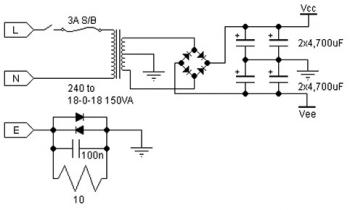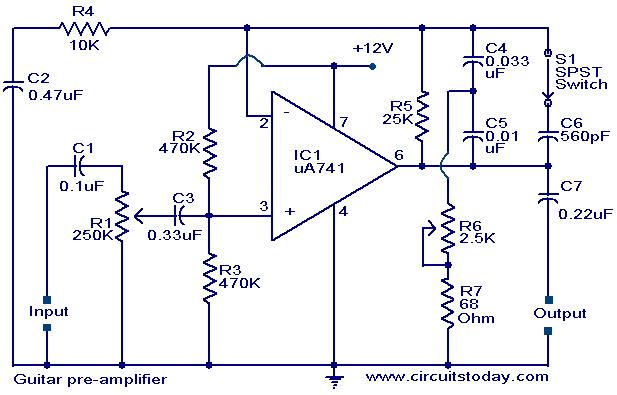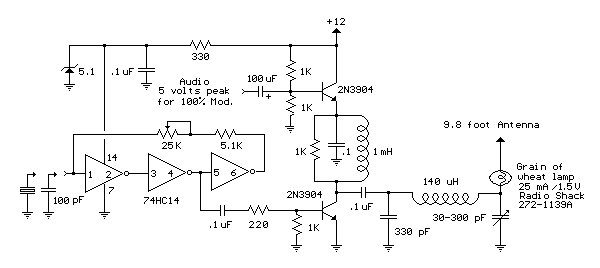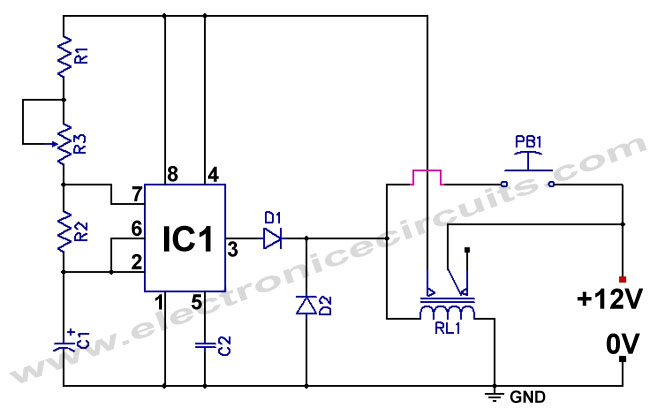
LME49810 IC For Power Amplifier

The following circuit illustrates the LME49810 integrated circuit used in a power amplifier circuit diagram. Features include improved drive capability for 4-ohm speaker impedance.
The LME49810 is a high-performance audio power amplifier IC designed to deliver high output power with low distortion. It is particularly well-suited for driving speakers with a nominal impedance of 4 ohms, making it ideal for various audio applications, including home theater systems and professional audio equipment.
The circuit typically consists of the LME49810 connected to a power supply, with additional components such as resistors and capacitors to stabilize the operation and enhance performance. The power supply voltage should be selected based on the desired output power and the specifications of the LME49810, which can operate efficiently within a range of supply voltages.
Key features of the LME49810 include its ability to provide high output current, which is essential for driving low-impedance loads without significant distortion. The circuit design often incorporates feedback mechanisms to ensure linearity and minimize harmonic distortion, which is critical in high-fidelity audio applications.
In the schematic, the input stage typically includes capacitive coupling to block DC components from the audio source, allowing only the AC audio signal to pass through. The output stage is usually connected to a suitable heatsink to dissipate heat generated during operation, ensuring reliable performance over extended periods.
Overall, the LME49810 circuit is designed to deliver high-quality audio amplification, making it a popular choice among audio engineers and enthusiasts. Proper layout and component selection are crucial for achieving optimal performance and minimizing noise in the final audio output.The following circuit shows about LME49810 IC For Power Amplifier Circuit Diagram. Features: better drive 4 ? impedance of the speakers, for the .. 🔗 External reference
The LME49810 is a high-performance audio power amplifier IC designed to deliver high output power with low distortion. It is particularly well-suited for driving speakers with a nominal impedance of 4 ohms, making it ideal for various audio applications, including home theater systems and professional audio equipment.
The circuit typically consists of the LME49810 connected to a power supply, with additional components such as resistors and capacitors to stabilize the operation and enhance performance. The power supply voltage should be selected based on the desired output power and the specifications of the LME49810, which can operate efficiently within a range of supply voltages.
Key features of the LME49810 include its ability to provide high output current, which is essential for driving low-impedance loads without significant distortion. The circuit design often incorporates feedback mechanisms to ensure linearity and minimize harmonic distortion, which is critical in high-fidelity audio applications.
In the schematic, the input stage typically includes capacitive coupling to block DC components from the audio source, allowing only the AC audio signal to pass through. The output stage is usually connected to a suitable heatsink to dissipate heat generated during operation, ensuring reliable performance over extended periods.
Overall, the LME49810 circuit is designed to deliver high-quality audio amplification, making it a popular choice among audio engineers and enthusiasts. Proper layout and component selection are crucial for achieving optimal performance and minimizing noise in the final audio output.The following circuit shows about LME49810 IC For Power Amplifier Circuit Diagram. Features: better drive 4 ? impedance of the speakers, for the .. 🔗 External reference





